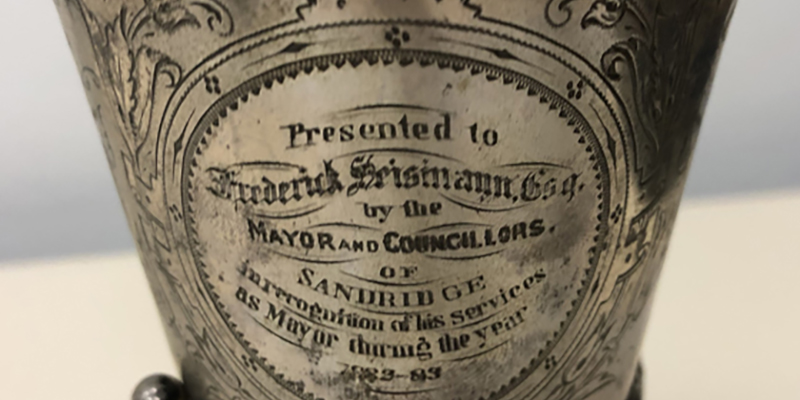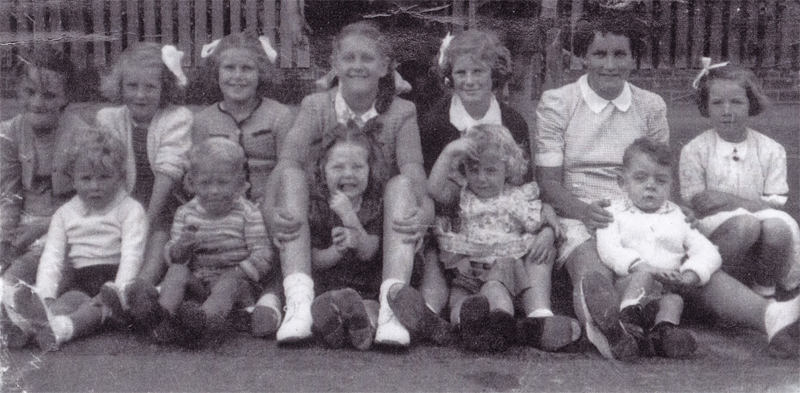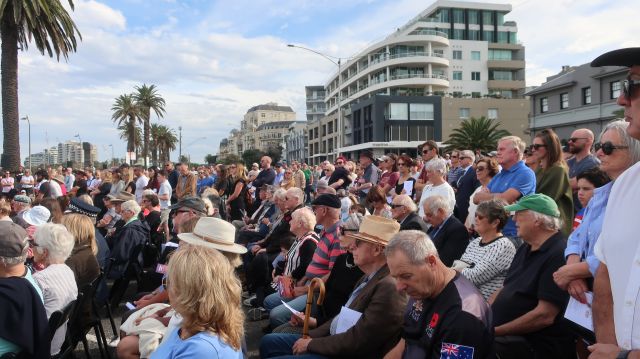Now and Then 2021 – Bridge Street Light Rail Crossing
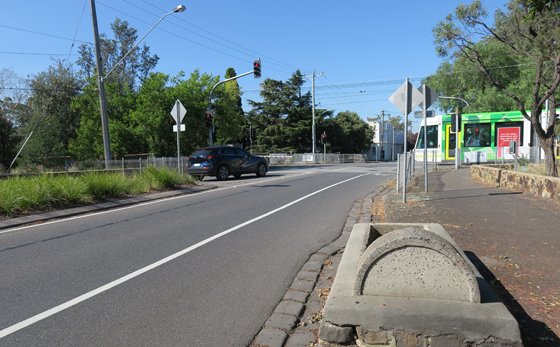
The light rail service from the city to Port Melbourne opened in December 1987 replacing the railway that had operated along much the same route since 1854. In that year the Hobson’s Bay Railway Company opened the first rail service in Australia from the city to the beach. They were granted a very generous area of crown land on either side of the line which now forms the parklands along Evans Street and Station Street. The last use of the infamous Red Rattlers was on the Port Melbourne, St Kilda and Sandringham lines. After the opening of the Melbourne train loop these wooden carriages were considered too great a fire risk.
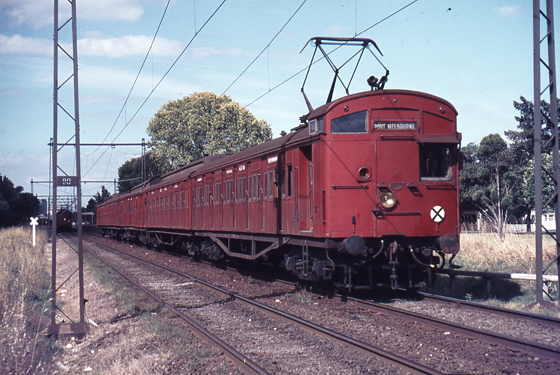
On the wide land reserve along Evans Street from Bridge to Graham Street a coal yard operated to store fuel for country trains. This photo was taken in 1987 from Bridge Street looking towards Graham Street. The coal yard operated until the closure of rail line. It has been replaced by the grass and trees of the popular Turner Reserve parkland.
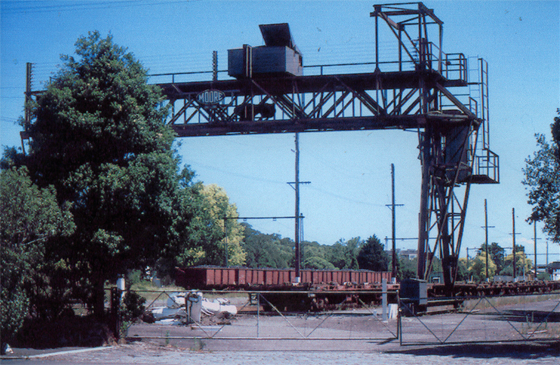
The railway level crossing on Bridge Street was not constructed until 1880 when population west of the railway line had expanded. The Station Hotel shown in this photo was built in 1866. It was extensively rebuilt and extended in the late 1800s. It closed in 1995 and was converted into three town houses. Like other hotels in Port Melbourne many stories are told about it, both fact and fiction.
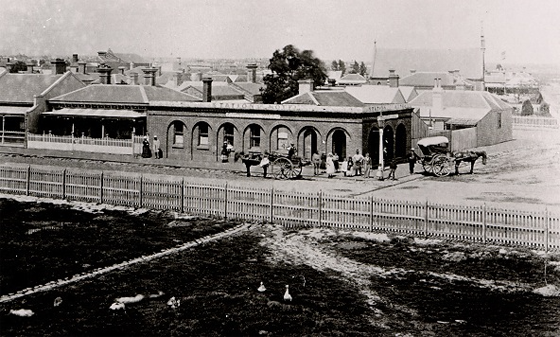
Wine merchant and Columnist Edward Joyce (a.k.a. The Ancient Mariner) was here during the hotel’s fist year, not long before he was elected to Council. He became mayor of Sandridge in 1871. Around that time that Bridge Street was extended over the railway. Level crossing gates and a signal box were added subsequently.
Station Hotel was rebuilt to two storeys … like most pubs in the Port, the hotel had unsavoury connections, and at one time was even declared ‘black’ by the Painter’s and Dockers Union.
In 1982 after fourteen years ownership, Loris Cooper sold it to all-time Port footy hero, the colourful Fred Cook, who still holds the record for Borough goals. With brother Rodney as licensee, Fred brought his own brand of excitement to the business, and featured fortunately for a brief time a topless waitress service.
…
In 1995 although retaining its heritage exterior, the Station Hotel was rebuilt as three town houses designed by architect John Davies – and Port Melbourne had lost one of its remaining pubs.
Chartered Scoundrels: A brief history of Port Melbourne Hotels, Pat Granger, PMH&PS, pp 83-84
One evening in 1984 or 1985 a disgruntled customer who had been refused service in the bar returned with a crowbar and systematically smashed all the downstairs windows in the bar area. The noise from his assault and the staff reactions to it could be heard from as far away as the Graham Street Station.
Melbourne to Port Melbourne Railway Line
In the early 1850s when Victoria’s population and wealth grew rapidly after the discovery of gold there were a number of Railway Companies registered, only a few of which actually built railway lines. The Melbourne and Hobson’s Bay Company was the first to do so although their line was only three miles long. The main purpose was to carry freight from the ships anchored in Hobson’s Bay to warehouses in Melbourne. In return for the generous land grant they received at the site of the Sandridge terminus, the Company contracted to build a pier and extend the rail line so that freight could be unloaded direct from ships onto the trains.
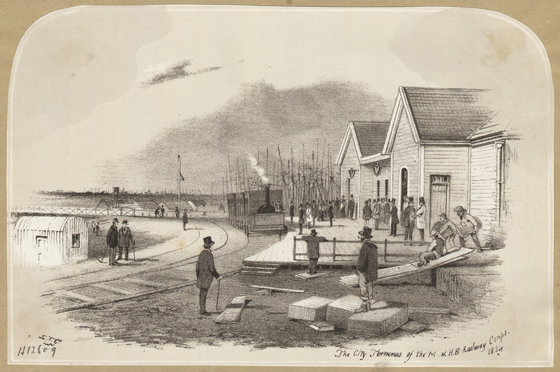
There was a splendid celebration when the line opened on September 12th, 1854. The Governor and his wife with most of the members of the Parliament boarded the first train and were accompanied on the journey by the band of the 4th Regiment who played from their humble 3rd class carriage.
The company struggled to remain solvent in spite of merging with another private company and in 1878 it was purchased by the government and incorporated into the Victorian Railways. Regular passenger services operated on the line and freight trains went out onto Railway Pier, later rebuilt as today’s Station Pier.
Turner Reserve
Lesley Stanley Turner was a long time resident of Evans Street and worked on the waterfront. He was elected to the Port Melbourne City Council in 1946. He remained on the Council until October 1973 when he resigned due to ill health. At that time all the councillors were Labour Party members however that altered in the subsequent by-election when the Labour-endorsed candidate, Allan McCarthy, was defeated by a young independent candidate, Glen Cosham.
This article is based on one of the panels that formed the Now and Then Exhibition of the Port Melbourne Historical & Preservation Society in 2021. The original panel can be seen here.
Bertie Street | Now and Then 2021 | Corner Bay and Spring Streets

